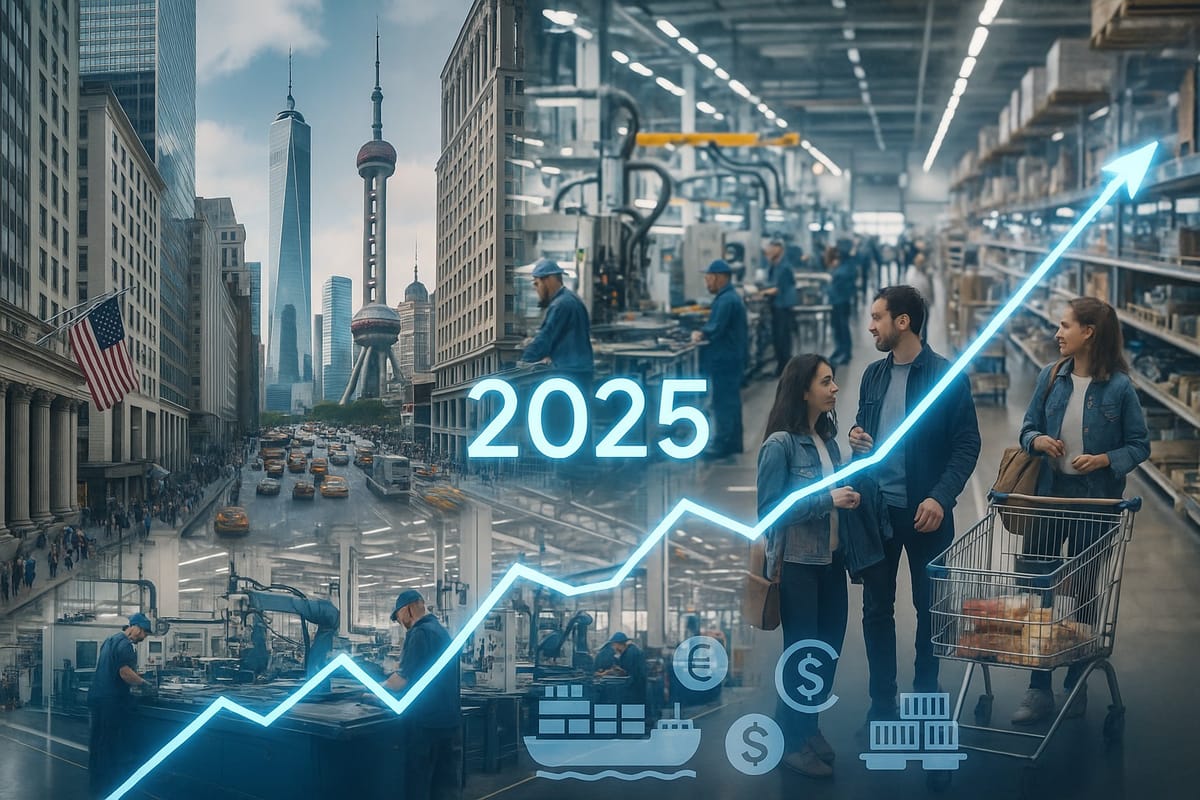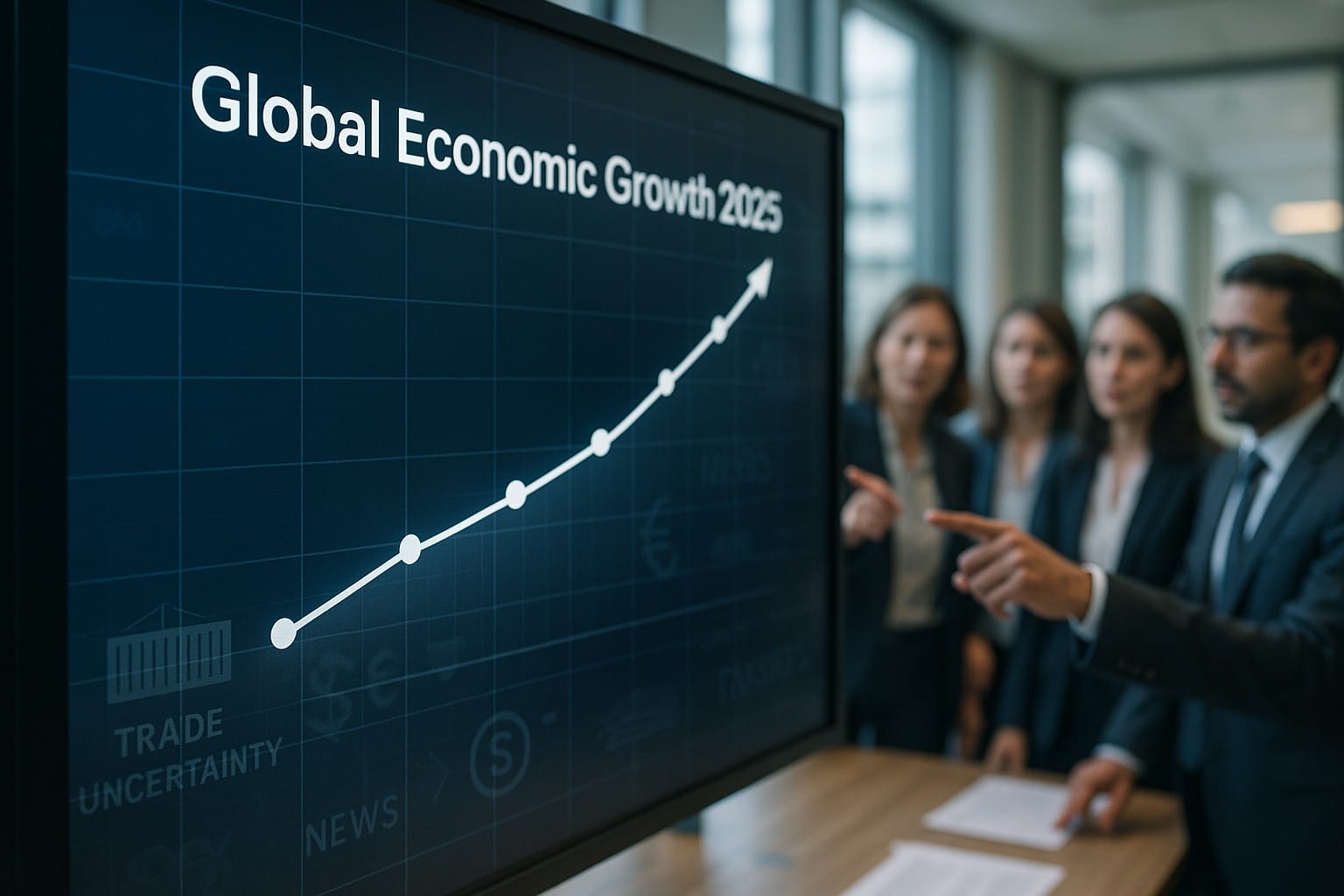Global Economic Growth Remains Resilient Amid Uncertainty
Global economic growth in 2025 stays solid, driven by consumption and investment, despite trade uncertainties and new US tariffs.

Global economic growth continues to show resilience amid turbulence in world trade. Despite new US tariff policies targeting China and Europe, Goldman Sachs has reported an upward revision in global economic projections for Q2 2025. Key indicators such as corporate investment, factory recruitment, and consumer spending in both developed and emerging economies remain robust, forming the backbone of this year’s international market optimism.
Optimism Behind New Tariff Policies
In its latest research, Goldman Sachs highlights the global economy’s response to the surge in US tariffs. While trade tensions have increased, macroeconomic data from the United States, China, and the European region indicate that capital investment and industrial expansion are ongoing. Many multinational companies continue to build new factories and develop manufacturing technologies, particularly in emerging markets like India, Mexico, and Vietnam. This supply chain diversification is a key strategy for industry players facing global trade uncertainty.
The global Purchasing Managers’ Index (PMI) also remains above 50, signaling ongoing expansion. This data aligns with strong recruitment trends in the manufacturing sector, where employment absorption rates remain high in key countries. Meanwhile, cooling inflation is contributing to stable purchasing power and growing consumer confidence.
Consumer Spending and Retail as the Engine of Growth
The resilience of the global economy cannot be separated from the strength of household consumption. Retail sales in the United States, Japan, and across Asia have shown consistent monthly growth. The services sector—especially tourism, hospitality, and entertainment—has seen a sharp post-pandemic recovery. Wage growth and low unemployment support this optimism, encouraging consumers to keep spending despite relatively high prices.
The United States remains the primary engine of global growth. The country’s economic growth projection for 2025 stands at 2.5%, buoyed by infrastructure investment, rising domestic demand, and a rapidly advancing tech sector. Meanwhile, China is maintaining growth around 5% thanks to fiscal stimulus and solid domestic consumption, even as new tariffs weigh on exports.

Stable Labor Markets and Investment
Labor market stability is a crucial factor supporting global economic growth. Unemployment rates in the United States, Japan, and the European Union are at their lowest levels in two decades. Wage growth, even as inflation slows, continues to sustain global purchasing power.
Private investment is also flowing into strategic sectors such as technology, manufacturing, and renewable energy. Developing countries like India and Mexico are becoming new investment hubs, thanks to industry relocation and government efforts to strengthen domestic sectors.
Challenges and Risks Ahead
While the global growth trend remains strong, Goldman Sachs underscores the need to watch several risks. Trade policy uncertainty, potential tariff retaliation, and ongoing geopolitical conflicts in Eastern Europe, the Middle East, and Asia Pacific could trigger market volatility in the near future. And though inflation is coming under control, tighter monetary policy in some countries still casts a shadow over growth prospects.
Governments and global industry leaders are now racing to adapt their strategies to maintain stability. Supply chain diversification, digital transformation, and innovation in the energy sector are the main focus areas for ensuring continued economic resilience.
2025 Global Outlook: Solid Amid Clouds of Uncertainty
In its report, Goldman Sachs has revised up its global economic growth projection for 2025 to 2.9%, up from the initial estimate of 2.7%. This jump is driven by robust household consumption, steady private investment, and increasingly adaptive fiscal and monetary policies. Emerging markets, especially in Asia, Latin America, and Africa, are expected to become the new engines of global growth. Reference: World Bank Global Economic Prospects
Although clouds of uncertainty remain, the global economy in 2025 is proving its resilience. Consumption, investment, and the labor market are the main pillars maintaining world economic stability. Looking ahead, geopolitical and trade policy challenges still need to be anticipated, but the economy’s endurance offers positive signals that the business world still has room to grow amid the turbulence of our times.





Comments ()